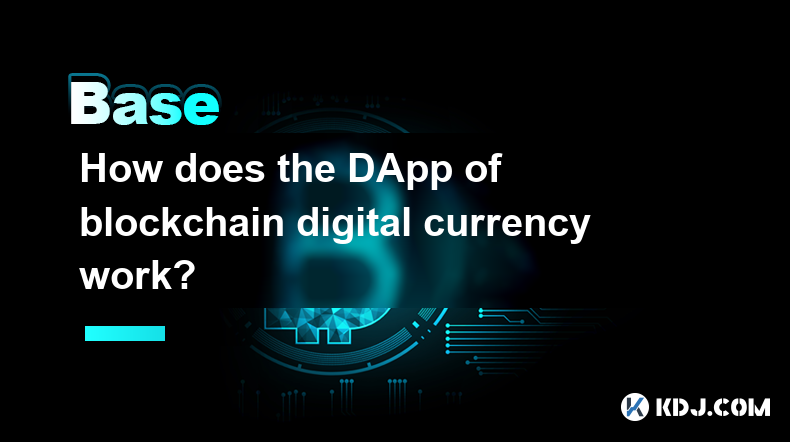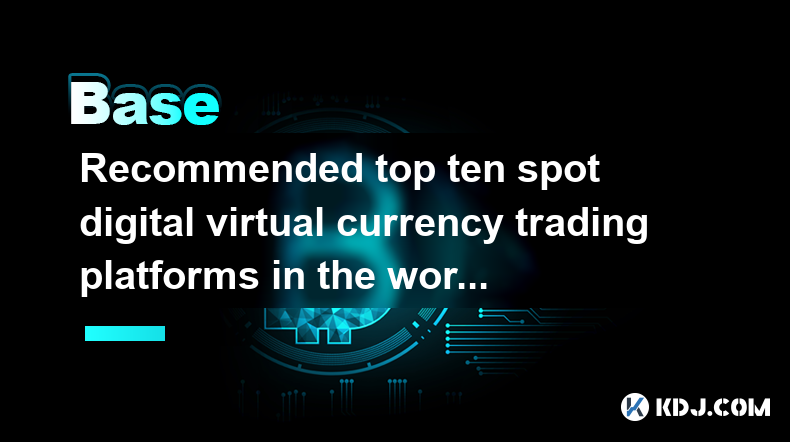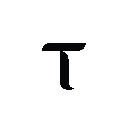-
 Bitcoin
Bitcoin $87,160.3686
2.59% -
 Ethereum
Ethereum $1,577.5291
-0.58% -
 Tether USDt
Tether USDt $1.0000
0.00% -
 XRP
XRP $2.0804
0.22% -
 BNB
BNB $596.3334
0.99% -
 Solana
Solana $136.5658
-0.15% -
 USDC
USDC $1.0000
0.00% -
 Dogecoin
Dogecoin $0.1584
1.77% -
 TRON
TRON $0.2458
-0.32% -
 Cardano
Cardano $0.6208
0.05% -
 Chainlink
Chainlink $13.1006
-1.96% -
 UNUS SED LEO
UNUS SED LEO $9.1412
-1.97% -
 Avalanche
Avalanche $19.9880
2.50% -
 Stellar
Stellar $0.2528
3.56% -
 Shiba Inu
Shiba Inu $0.0...01238
-0.19% -
 Toncoin
Toncoin $2.8930
-3.79% -
 Sui
Sui $2.2031
4.44% -
 Hedera
Hedera $0.1692
1.25% -
 Bitcoin Cash
Bitcoin Cash $343.2002
2.28% -
 Polkadot
Polkadot $3.8296
-1.99% -
 Hyperliquid
Hyperliquid $17.9378
1.39% -
 Litecoin
Litecoin $78.0777
0.75% -
 Dai
Dai $0.9999
0.00% -
 Bitget Token
Bitget Token $4.4322
0.90% -
 Ethena USDe
Ethena USDe $0.9993
0.00% -
 Pi
Pi $0.6347
-0.88% -
 Monero
Monero $214.7110
-0.08% -
 Uniswap
Uniswap $5.2643
-0.22% -
 Pepe
Pepe $0.0...07787
2.99% -
 Aptos
Aptos $4.9970
-0.84%
How does the DApp of blockchain digital currency work?
DApps, using blockchain's decentralization and smart contracts, offer transparent, secure applications. User interaction varies, but security remains crucial for developers and users alike, presenting both challenges and opportunities.
Mar 24, 2025 at 03:35 pm

Key Points:
- DApps leverage blockchain technology for transparency, security, and decentralization.
- DApp functionality relies on smart contracts automating processes.
- User interaction with DApps varies depending on the application's design.
- Security considerations are crucial for both DApp developers and users.
- The decentralized nature of DApps presents unique challenges and opportunities.
How Does the DApp of Blockchain Digital Currency Work?
Decentralized applications (DApps) represent a significant evolution in software development, leveraging the core tenets of blockchain technology: decentralization, transparency, and immutability. Unlike traditional applications that rely on centralized servers, DApps distribute their functionality across a network of nodes, making them resistant to censorship and single points of failure. This decentralization is achieved through the use of blockchain and smart contracts.
The heart of a DApp lies in its smart contracts. These self-executing contracts, written in code and stored on the blockchain, automatically enforce the agreement's terms. When specific conditions are met, the smart contract executes pre-defined actions, eliminating the need for intermediaries. This automation is key to the efficiency and transparency of DApps.
User interaction with a DApp typically involves interacting with its front-end interface, often a website or mobile application. This interface connects the user to the underlying smart contracts on the blockchain. Actions performed through the interface trigger transactions on the blockchain, which are then verified and added to the distributed ledger.
For example, a DApp for decentralized finance (DeFi) might allow users to lend and borrow cryptocurrencies without the need for a bank. The smart contract manages the lending process, automatically distributing interest and ensuring repayment according to predefined terms. This eliminates the need for trust in a central authority.
The security of a DApp relies heavily on the security of the underlying blockchain and the smart contracts themselves. Bugs or vulnerabilities in the smart contracts can be exploited, potentially leading to significant financial losses. Therefore, rigorous auditing and testing are crucial during the development phase. Users should also exercise caution and only interact with reputable DApps.
The decentralized nature of DApps presents unique challenges. Scalability can be an issue, as transaction processing speed may be slower than centralized systems. Furthermore, the user experience can be less intuitive than traditional applications due to the complexities of interacting with a blockchain. However, the benefits of decentralization often outweigh these challenges for many users.
The process of building a DApp typically involves several steps:
- Concept and Design: Defining the DApp's purpose and functionality.
- Smart Contract Development: Writing the code for the smart contracts.
- Front-End Development: Creating the user interface.
- Testing and Auditing: Thoroughly testing the smart contracts for vulnerabilities.
- Deployment: Deploying the smart contracts to the chosen blockchain network.
- Maintenance and Updates: Regularly updating and maintaining the DApp.
Different blockchains offer varying levels of support for DApps. Ethereum, for example, is widely used for its mature ecosystem and extensive developer tools. Other blockchains, such as EOS and Solana, are also gaining popularity for their scalability and performance improvements. The choice of blockchain depends on the specific needs of the DApp.
The gas fees associated with transactions on the blockchain can also significantly impact the user experience. These fees, paid in the native cryptocurrency of the blockchain, compensate miners or validators for processing transactions. High gas fees can make using certain DApps prohibitively expensive for some users.
The future of DApps is promising, with potential applications across various industries. From supply chain management and digital identity to gaming and social media, DApps are poised to disrupt traditional models by offering greater transparency, security, and user control. However, continued innovation in scalability and user experience is crucial for widespread adoption.
Frequently Asked Questions:
Q: What are the benefits of using DApps over traditional apps?
A: DApps offer increased transparency, security through decentralization, censorship resistance, and immutability of data due to their reliance on blockchain technology. They also eliminate the need for intermediaries in many cases.
Q: Are DApps secure?
A: While DApps are generally more secure than traditional apps due to decentralization, they are not immune to vulnerabilities. Smart contract security is paramount; bugs or vulnerabilities can be exploited. Thorough auditing is crucial.
Q: What are smart contracts and how do they work in DApps?
A: Smart contracts are self-executing contracts with the terms of the agreement between buyer and seller being directly written into lines of code. They automate processes within a DApp, triggered by specific conditions, ensuring transparency and efficiency.
Q: What blockchains are commonly used for DApps?
A: Ethereum is a popular choice, but others like EOS, Solana, and others are gaining traction, each offering different strengths in terms of scalability, transaction speed, and developer tools. The choice depends on the DApp's requirements.
Q: What are gas fees in the context of DApps?
A: Gas fees are transaction fees paid to miners or validators for processing transactions on a blockchain. These fees can vary depending on network congestion and can impact the cost of using a DApp.
Disclaimer:info@kdj.com
The information provided is not trading advice. kdj.com does not assume any responsibility for any investments made based on the information provided in this article. Cryptocurrencies are highly volatile and it is highly recommended that you invest with caution after thorough research!
If you believe that the content used on this website infringes your copyright, please contact us immediately (info@kdj.com) and we will delete it promptly.
- Lightchain AI: The Future of Cryptocurrency
- 2025-04-22 05:30:13
- Coinbase Expands XRP Futures Contracts Trading
- 2025-04-22 05:30:13
- Difficulty Spike and Hashrate Drop Lengthen Block Times
- 2025-04-22 05:25:13
- Despite the Harshest Profit Squeeze in Half a Decade, Bitcoin Mining on U.S. Soil is Consolidating and Gathering Momentum
- 2025-04-22 05:25:13
- Bitcoin (BTC) markets ticked higher
- 2025-04-22 05:20:13
- Shiba Inu (SHIB) and Lightchain AI (LCAI) Are Rapidly Gaining Ground, Positioning Themselves as Serious Competitors to Dogecoin.
- 2025-04-22 05:20:13
Related knowledge

What are the formal digital currency trading apps? What are the BTC exchange apps?
Apr 22,2025 at 03:28am
Regular BTC trading app 1. Binance Binance is a world-renowned digital currency trading platform, providing powerful APPs and excellent user experience. Its main features include: Rich trading pairs : Binance supports over 500 cryptocurrencies and thousands of trading pairs, and users can easily find the currency they want to trade. High security : Bina...

Recommended top ten spot digital virtual currency trading platforms in the world in 2025
Apr 21,2025 at 05:15pm
Recommended top ten spot digital virtual currency trading platforms in the world in 2025 1. Binance As the world's premier cryptocurrency trading platform, Binance is known for its extensive trading pairs and efficient trading services. Its features include: High Liquidity : Binance has huge trading volumes, ensuring users can trade at the best pric...

Ranking of top ten virtual currency trading apps in the currency circle (the latest authoritative list in 2025)
Apr 21,2025 at 10:28pm
The top ten virtual currency trading apps in the 2025 cryptocurrency circle are listed as follows: 1. Binance Binance is one of the world's leading cryptocurrency trading platforms, known for its efficient trading system and extensive currency support. Binance's user interface is designed with simplicity and is suitable for beginners and profess...

Introduction to the top ten digital currency trading app platforms in 2025
Apr 22,2025 at 03:49am
Introduction to the top ten digital currency trading app platforms in 2025 1. Binance Binance is one of the world's leading digital currency trading platforms, ranking first with its huge trading volume and extensive user base. Binance provides trading pairs of more than 500 cryptocurrencies, supporting a variety of trading methods such as spot trad...

The latest ranking of the top ten digital virtual currency trading platforms in 2025
Apr 22,2025 at 02:14am
The latest ranking of the top ten digital virtual currency trading platforms in 2025 1. Binance As the world's largest cryptocurrency trading platform, Binance has always maintained its leading position. The platform offers trading pairs in over 500 cryptocurrencies and supports multiple languages and payment methods. Its user-friendly interface i...

Which virtual currency app is better? Top ten cryptocurrency app trading platforms
Apr 22,2025 at 02:35am
Top 10 cryptocurrency trading application platforms recommended 1. Binance Binance is one of the world's leading cryptocurrency trading platforms, and is popular for its extensive currency support and efficient trading systems. Binance provides services including spot trading, futures trading, leveraged trading, etc., which meet the needs of differe...

What are the formal digital currency trading apps? What are the BTC exchange apps?
Apr 22,2025 at 03:28am
Regular BTC trading app 1. Binance Binance is a world-renowned digital currency trading platform, providing powerful APPs and excellent user experience. Its main features include: Rich trading pairs : Binance supports over 500 cryptocurrencies and thousands of trading pairs, and users can easily find the currency they want to trade. High security : Bina...

Recommended top ten spot digital virtual currency trading platforms in the world in 2025
Apr 21,2025 at 05:15pm
Recommended top ten spot digital virtual currency trading platforms in the world in 2025 1. Binance As the world's premier cryptocurrency trading platform, Binance is known for its extensive trading pairs and efficient trading services. Its features include: High Liquidity : Binance has huge trading volumes, ensuring users can trade at the best pric...

Ranking of top ten virtual currency trading apps in the currency circle (the latest authoritative list in 2025)
Apr 21,2025 at 10:28pm
The top ten virtual currency trading apps in the 2025 cryptocurrency circle are listed as follows: 1. Binance Binance is one of the world's leading cryptocurrency trading platforms, known for its efficient trading system and extensive currency support. Binance's user interface is designed with simplicity and is suitable for beginners and profess...

Introduction to the top ten digital currency trading app platforms in 2025
Apr 22,2025 at 03:49am
Introduction to the top ten digital currency trading app platforms in 2025 1. Binance Binance is one of the world's leading digital currency trading platforms, ranking first with its huge trading volume and extensive user base. Binance provides trading pairs of more than 500 cryptocurrencies, supporting a variety of trading methods such as spot trad...

The latest ranking of the top ten digital virtual currency trading platforms in 2025
Apr 22,2025 at 02:14am
The latest ranking of the top ten digital virtual currency trading platforms in 2025 1. Binance As the world's largest cryptocurrency trading platform, Binance has always maintained its leading position. The platform offers trading pairs in over 500 cryptocurrencies and supports multiple languages and payment methods. Its user-friendly interface i...

Which virtual currency app is better? Top ten cryptocurrency app trading platforms
Apr 22,2025 at 02:35am
Top 10 cryptocurrency trading application platforms recommended 1. Binance Binance is one of the world's leading cryptocurrency trading platforms, and is popular for its extensive currency support and efficient trading systems. Binance provides services including spot trading, futures trading, leveraged trading, etc., which meet the needs of differe...
See all articles






















































































